
- Viaja más por menos
- Hazte miembro antes del 31/01/2026 y obtén un 10% de descuento en reservas con FlixBus
Find out all about what the Netherlands has to offer travelers in this comprehensive Netherlands travel guide. The perfect guide for backpackers and conscious travelers.
20min

When you think of the Netherlands, some of the most popular Dutch icons may spring to mind: cheese; clogs; tulips and windmills. You may also picture the capital Amsterdam, with its pretty canals, world-class museums, coffee shops (where coffee is not the main draw) and famous red-light district.
While all of these are not to be missed while traveling through Holland, the country has so much more to offer off-the-beaten tourist path. I've been living in the Netherlands for several years now, and after many adventures around the country, I decided to create this guide for fellow backpackers and conscious travelers.
This Netherlands guide aims to tell you all you need to know about planning a trip to the Netherlands and also provides information about doing a work exchange in this small but fascinating country.
The Netherlands is a small country in northwestern Europe that shares borders with Germany to the east and Belgium to the south. If you head west across the sea, you'll reach Great Britain.
The Kingdom of the Netherlands also includes the constituent countries Aruba, Curacao and Sint Maarten, and the islands Bonaire, Sint Eustasius and Saba are municipalities of The Netherlands. The country consists of 12 provinces and the capital city is Amsterdam, although the government and Dutch royal family is located in The Hague.
You may have heard the Netherlands being referred to as Holland, but this is not a correct name for the whole country as Holland really only refers to two provinces: North Holland and South Holland. While you won't offend most people using the name Holland, locals will definitely be impressed if you can tell the difference between that and the Netherlands!
The Netherlands is a very small country with a large population for its size. There are around 17 million people living in an area of 41,543 square kilometers, which makes the Netherlands one of the most densely-populated countries in Europe.
In terms of landscape, it is mainly flat and some of the country is even below sea level. There is a long coastline and there are many beautiful, wide sandy beaches all along the mainland and all around the five islands (Texel, Vlieland, Terschelling, Ameland and Schiermonnikoog) on the northern coast.
As it is so densely populated, a lot of the Netherlands is either urban space or used for agriculture. Despite this, there are still some areas of natural beauty to be found scattered around the country, but more on that later.
The Netherlands is a country with a turbulent history but a peaceful present. Up until the 18th century, the country was in constant turmoil due to various invasions and religious conflicts.
The year 1602 saw the creation of the Dutch East India Company, a powerful global enterprise and instrument of colonization (the Dutch colonial empire included Indonesia, Suriname and the Dutch West Indies) and it helped turned the country into an extremely prosperous one.
The 1700s in the Netherlands are referred to as the Golden Age, a more stable and peaceful period during which the Dutch took center stage in terms of trade, science, military and art. The Golden Age came to an end when the country became involved in various wars with France in the 18th century. A civil war in 1785 further weakened Dutch society and the country's economy.
In 1815, the Kingdom of the Netherlands was created but religious, linguistic and cultural differences between the northern and southern states made this a troublesome arrangement and in 1830 Belgium, as we now know it, was established. A new (more liberal and democratic) constitution, overseen by King Willem II, was introduced in 1848 and this remains the foundation of the Dutch government to the present day.
The Netherlands remained neutral during the First World War but did benefit from trading with both sides of the conflict. The Second World War, however, was devastating. The Netherlands was invaded by Germany in May 1940 and remained under Nazi control until May 1945. These five years saw the country suffer from great oppression, poverty and even starvation. The country was in a terrible state, physically and spiritually, by the end of these five long years.
The 1950s saw a gradual return to prosperity, and the 1960s and 1970s were marked by great social change — it was during this time that Amsterdam became a symbol of free-living and Dutch society became increasingly progressive and socially liberal. Drugs laws were loosened (paving the way for modern-day 'coffee shops' in which cannabis can be bought and consumed) and same-sex marriage was legalized in 2001 (a world first).
Today, the Netherlands is a stable and wealthy country. There is a large middle class, a relatively generous social security system and a high standard of living. However, as in many countries all over the world, the far-right has been making gains and the typically centrist policies of the Dutch government have taken a shift to the right as a consequence. It remains to be seen what will happen in the coming years, but hopefully, the Netherlands will continue to exist as the tolerant country it has been for so long.
The Netherlands has a population of just over 17 million, 79% of which is Dutch. The other main nationalities present in the country are other Europeans (almost 6%), Turkish, Moroccan, Indonesian, Surinamese, and Antillean. You can, however, find people from all over the world in this small but diverse country!
The Netherlands has two official languages: Dutch (the main language) and Frisian (spoken in the northeastern province of Friesland). English is widely understood and spoken; in fact, the Dutch are some of the world's best non-native English speakers, so you won't often encounter language barriers while traveling in the Netherlands.
The Netherlands is a predominantly non-religious country (more than 50% of the population does not adhere to any religion) but the largest religious groups are Roman Catholics and Protestants.
Dutch society is modern, egalitarian, tolerant and liberal. While traveling through Holland, you'll probably notice that the country and its people tend to be highly organized and structured, that the social hierarchy is very flat and that everything is rather conventional — there are no real extremes in any aspect of life (although first-time visitors to Amsterdam might consider what they're seeing — cannabis for sale in shops and sex workers in windows – as rather extreme!).
Dutch people are renowned for their openness and their direct approach when communicating, which can come as a shock to some visitors who may see this as coarseness. However, Dutch people are generally friendly and keen to help people visiting their country.
The Netherlands has a rich artistic heritage and has produced many well-known painters, such as Vermeer, Rembrandt and Van Gogh. You can see the works of these artists and more in museums and galleries throughout the country. This tiny land has also produced its fair share of prominent philosophers, writers, poets, architects and designers. Dutch innovation and engineering, in particular, is world-renowned, especially when it comes to water management (a lot of the Netherlands is under sea level so a great deal of effort is invested into keeping the place from flooding!).
The Dutch are quite sporty and according to one study, around two-thirds of the population between 15 and 75 participates in sports weekly. The most popular sports are football and field hockey, and the country tends to perform well in both of these on an international level (at the moment, this is more true of the women's teams).
Speed skating is another one of the country's strong sports and there is a Dutchman — Max Verstappen — represented in F1 racing too. On a non-professional level, the majority of Dutch people ride bicycles regularly (cycling in Holland is an essential activity for tourists, in my opinion) and they like water sports such as swimming and sailing (undoubtedly due to the abundance of water — sea, rivers, lakes and canals).
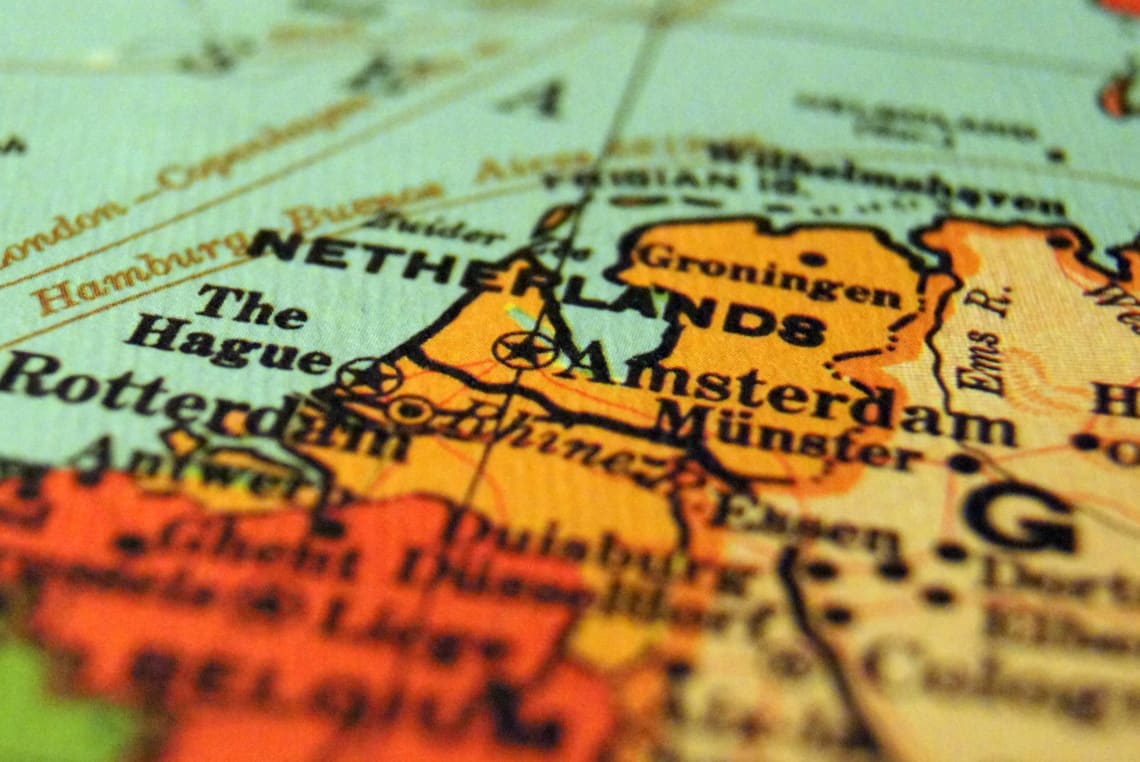
Depending on your nationality, you may need to apply for a 90-day Schengen visa in order to visit the Netherlands. This visa also allows you to visit the other Schengen countries in Europe. If you are a citizen of the EU, EEA or of Switzerland, you are exempt from this visa requirement.
For more information, visit Netherlands and you.
Schiphol Airport in Amsterdam is a major international transport hub so flying into the Netherlands is pretty straightforward from most places in the world.
If you are traveling from the UK you could also take a ferry from Newcastle, Hull or Harwich directly to the Netherlands, or from Dover to Calais in France if you have a car (you can also travel through the Channel Tunnel if you take this route).
If traveling by train is more your thing, you can reach Rotterdam and Amsterdam by high-speed train from London, Brussels and Paris.
Getting around in the Netherlands is relatively easy and you'll never have to travel very far or too long. Traveling between cities and towns can be done by car or rail, and traveling within cities by bus or by bike (driving in Dutch cities can be a bit of a headache as cars are actively discouraged in many places).
I really recommend doing as much cycling as you can — it's a real authentic Dutch experience, great exercise, safe and simple thanks to the extensive network of cycle paths, and good for the environment. Most train stations in the Netherlands offer bike rental so, by combining train travel with cycling, you can explore the whole country!
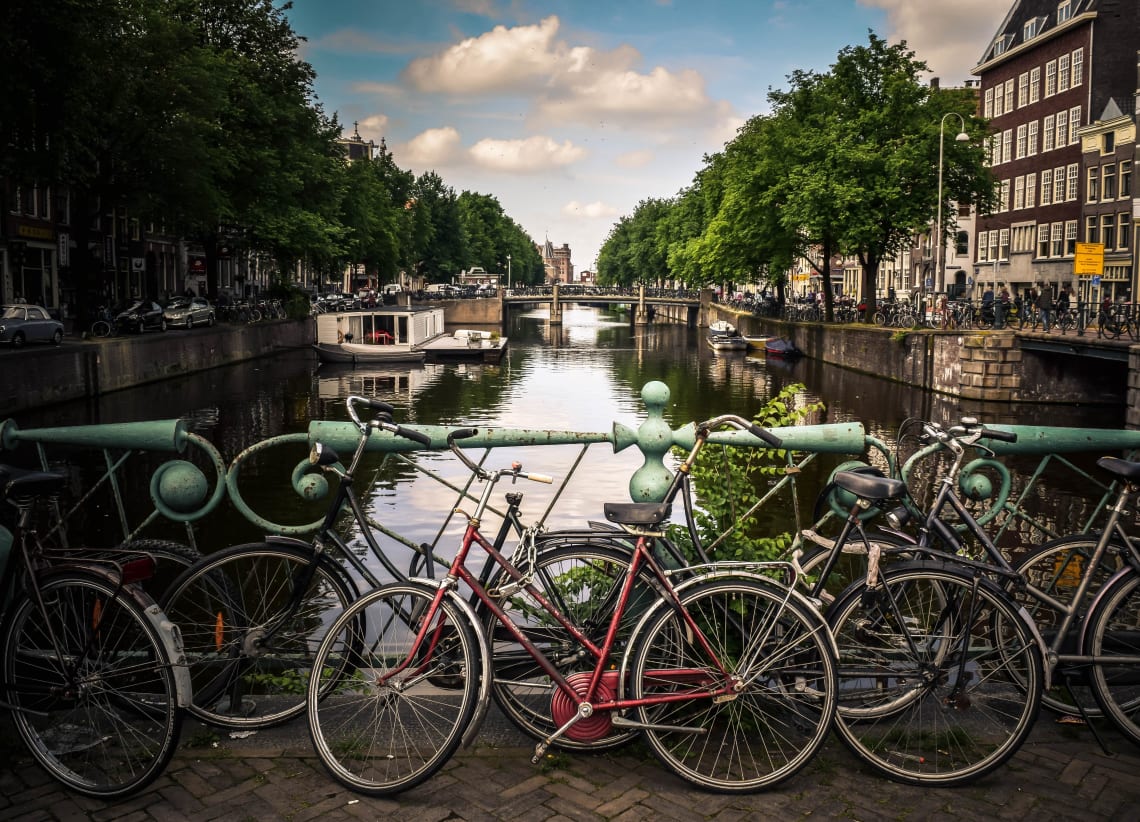
First of all, you need to know that the currency used in the Netherlands is the Euro. Second of all, bear in mind that this is not a budget destination — you'll need some savings — but traveling through the Netherlands doesn't have to cost a fortune either (if you don't want it to).
At a push, you could probably get by on €30-€40 per day if you slept in hostels, cooked all of your own meals and didn't do much in the way of activities. If you want to travel, visit attractions and go out at night, you will, of course, be spending more than that.
Your main expense will be accommodation, which is rather pricey, but there are ways to keep costs down. You could, for example, sleep in hostel dormitories (around €25 per night) or go camping if weather permits (around €15 for a tent pitch).
The most economical way of staying in the Netherlands is to do a Worldpackers work exchange as you'll not only benefit from free accommodation, but you'll also get at least one free meal a day! To learn more, browse work exchange opportunities in the Netherlands on the Worldpackers website. I've also included an entire section about how to travel on a budget in the Netherlands using Worldpackers at the end of this article, so keep reading!
Your next biggest expenditure will probably be transport; trains, buses and rental and running costs for cars are all high in the Netherlands. Luckily, Dutch cities are not that large and you can do a lot of exploring on foot. Cycling is also an inexpensive and efficient way to get around. However, if you do a Worldpackers placement and save lots of cash on accommodation and food, you'll have much more to spend on getting around and exploring Holland.
Dining out is not cheap in the Netherlands but food in the supermarket and at local markets is affordable. If you stick to preparing your own meals, you can keep costs low.
Important tip: foreign debit cards are not always accepted in shops and restaurants so always have some cash on you. On the other hand, always carry a debit or credit card because an increasing number of establishments do not accept cash!
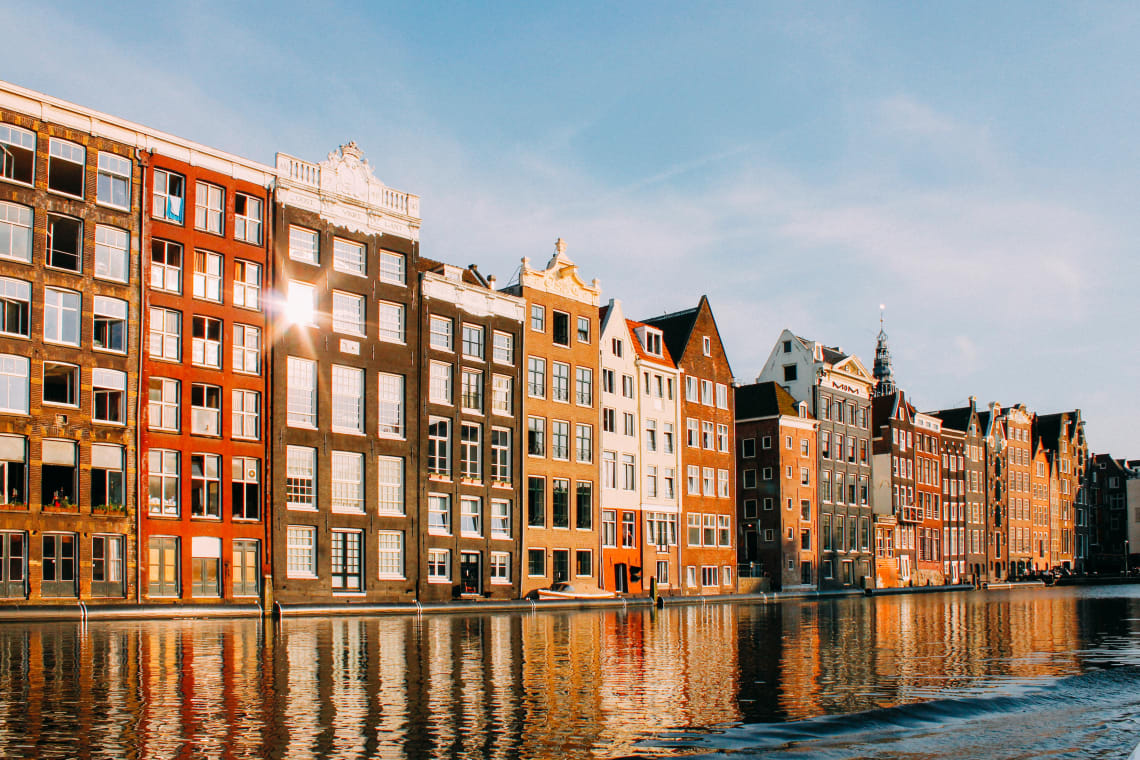
Each season offers a different experience in the Netherlands.
Spring is flower season and the country's fields become explosions of color, especially in the provinces of North Holland and South Holland. Keukenhof, one of the world's largest flower gardens, is open from March to May and is well worth a visit.
In the Netherlands it often feels like it takes forever for summer to arrive but, when it does, it arrives with a bang. Suddenly everybody is outside in a good mood and you can feel the positive vibes.
Summer in the Netherlands means long evenings, loads of BBQs, an insane amount of festivals and numerous trips to the beach. This country has a long coastline and many beautiful beaches, some very close to major cities such as Scheveningen (a popular beach close to The Hague), Noordwijk (15 minutes away from Leiden) and Bloemendaal (near Amsterdam).
Autumn is a great time to explore some of the Netherlands' parks and forests to see the changing colors of the leaves and to explore cities with fewer crowds.
Winters can get pretty cold and you may even get snow if you visit between December and February, but don't let that stop you. It is during these chilly and dark days that you can fully appreciate Dutch gezelligheid by retreating to cozy cafés and drinking hot chocolate. If it is a particularly cold year (increasingly rare these days due to climate change), you may even be able to ice skate on frozen canals — a traditional Dutch pastime!
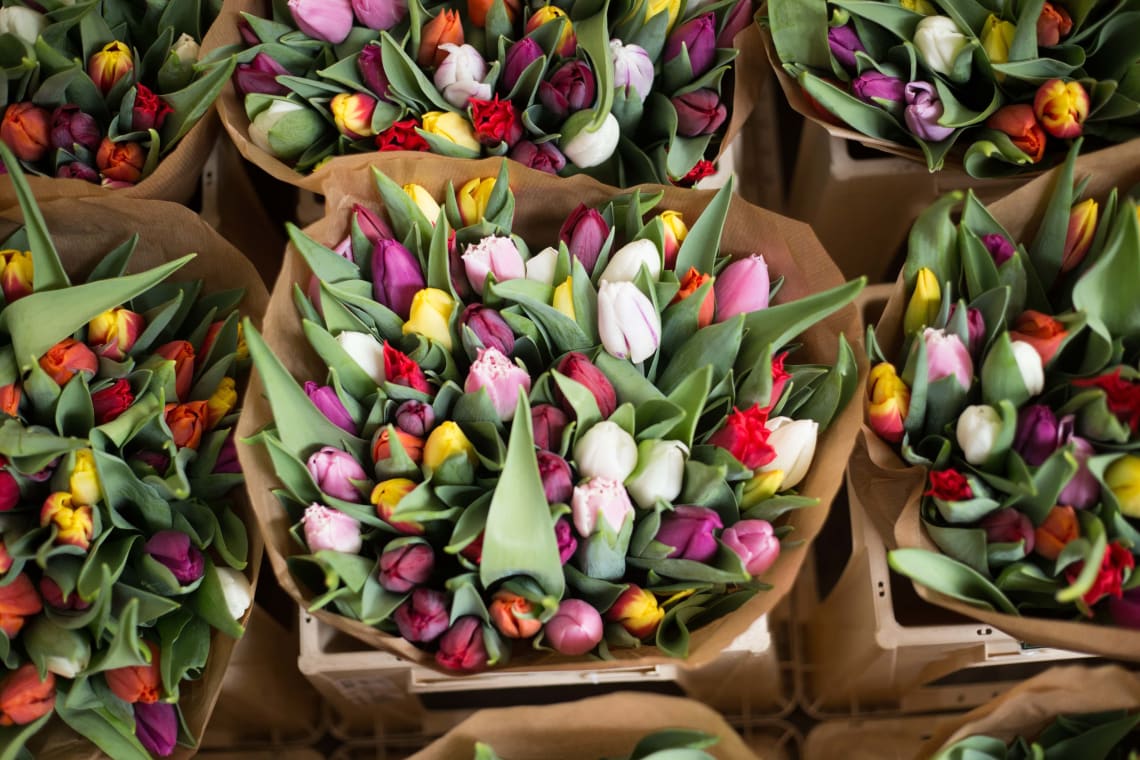
The Netherlands is generally a safe country and crime rates aren't out-of-the-ordinary. You should, however, always keep your personal safety in mind while traveling and in the Netherlands this is no exception.
Be careful when cycling because Dutch roads can be busy and people don't tend to have much patience for inexperienced cyclists who break the rules of the road. Avoid street dealers in Amsterdam, they will probably rip you off or, in the worst-case scenario, sell you dangerous substances.
Finally, keep an eye out for pickpockets in the major cities.
When people ask me where I am from, and I reply that I live in the Netherlands, most of the time I hear something like "Oh cool. Amsterdam?" Though it is an incredible city, Amsterdam is not the only destination the Netherlands has to offer!
Here are my top 10 places to visit in the Netherlands and what you can do there (and, don't worry, I have included the capital city in this list).
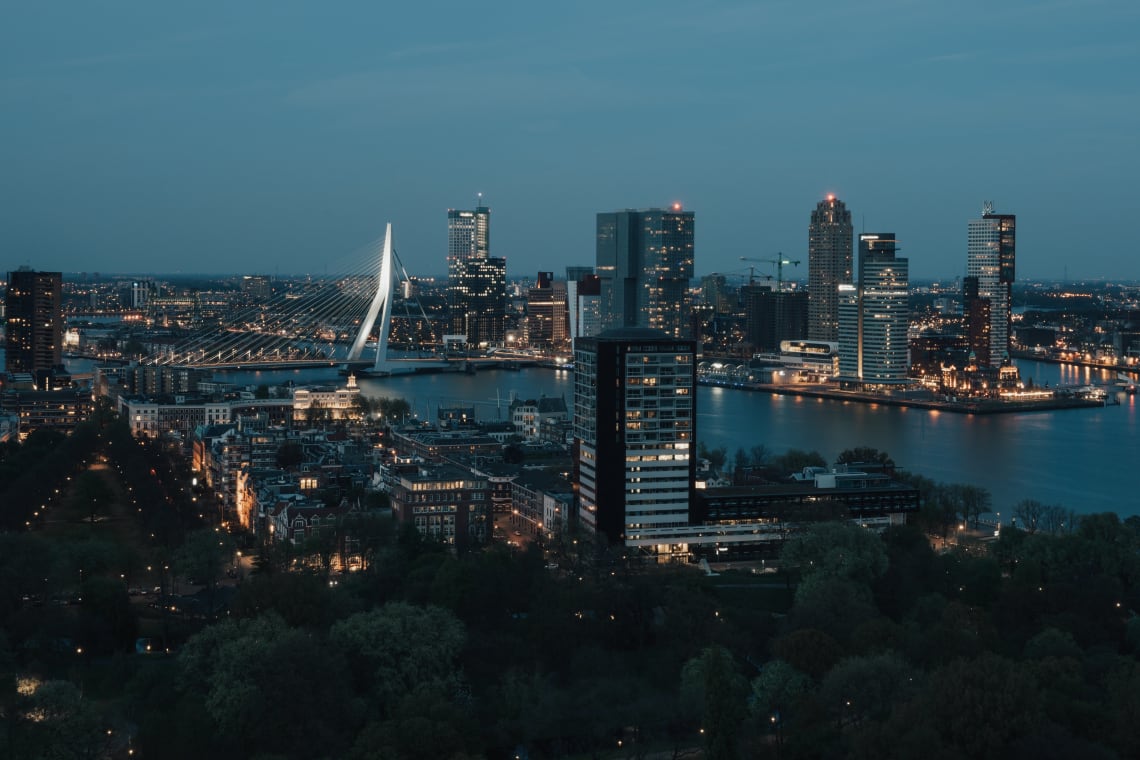
Rotterdam is the Netherlands' second city and home to one of the world's biggest ports.
One of the main draws of this city is its architecture; a lot of the city was destroyed during the Second World War and the rebuilding process saw a lot of different architectural styles being incorporated into the urban space. Definitely worth seeing are the cube houses (also home to a hostel and a chess piece museum), the Markthal (a food market with shops and restaurants) and the Erasmus Bridge — all within walking distance from each other.
If you are into photography, the Dutch Photo Museum is well worth a visit and, if you like art, head to the Kunsthal. For those who enjoy shopping in vintage stores, looking around in small art galleries and going to hip bars and cafés, go to Witte de Withstraat (also a great location for a night out).
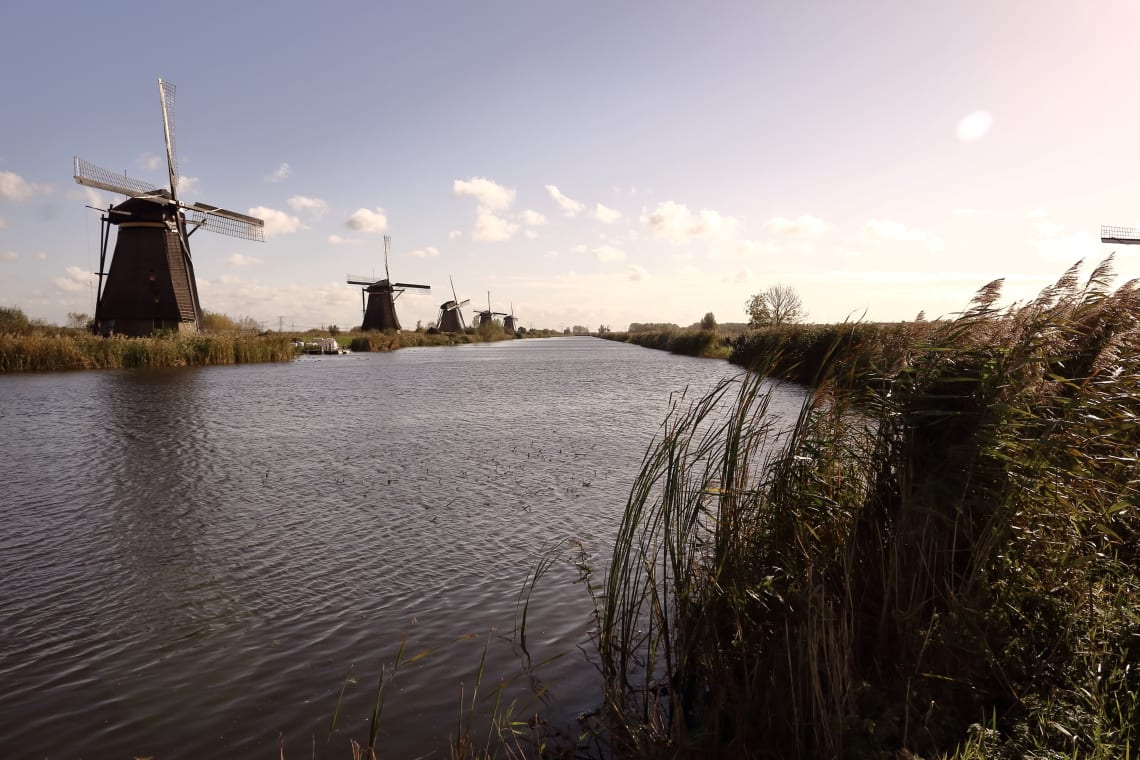
Just 30 minutes from Rotterdam is Kinderdijk — a historic village with 18th-century windmills that has UNESCO World Heritage status. This collection of windmills and pumping systems has been working to keep the land dry for over 1000 years and is a striking example of Dutch ingenuity when it comes to water management.
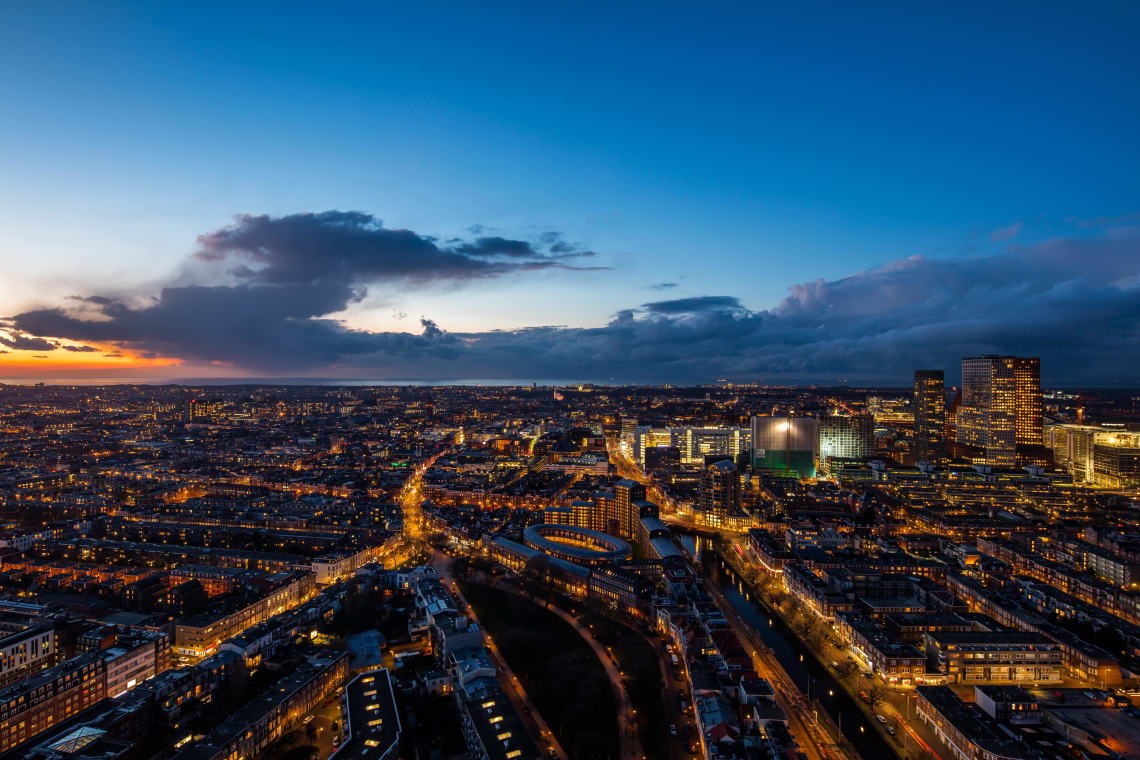
The Hague is the country's political centre, home to parliament, the King's workplace, the U.N. International Court of Justice and the International Criminal Court. This is a city with a lot to see and do, but without the crowds and tourist traps like Amsterdam has.
A trip to Den Haag (The Hague in Dutch) should include a visit to the Mauritshuis Museum, home to a range of works by famous painters such as Rubens, Vermeer and Jan Steen. The most famous piece of art housed here is the masterpiece 'The Girl with the Pearl Earring.'
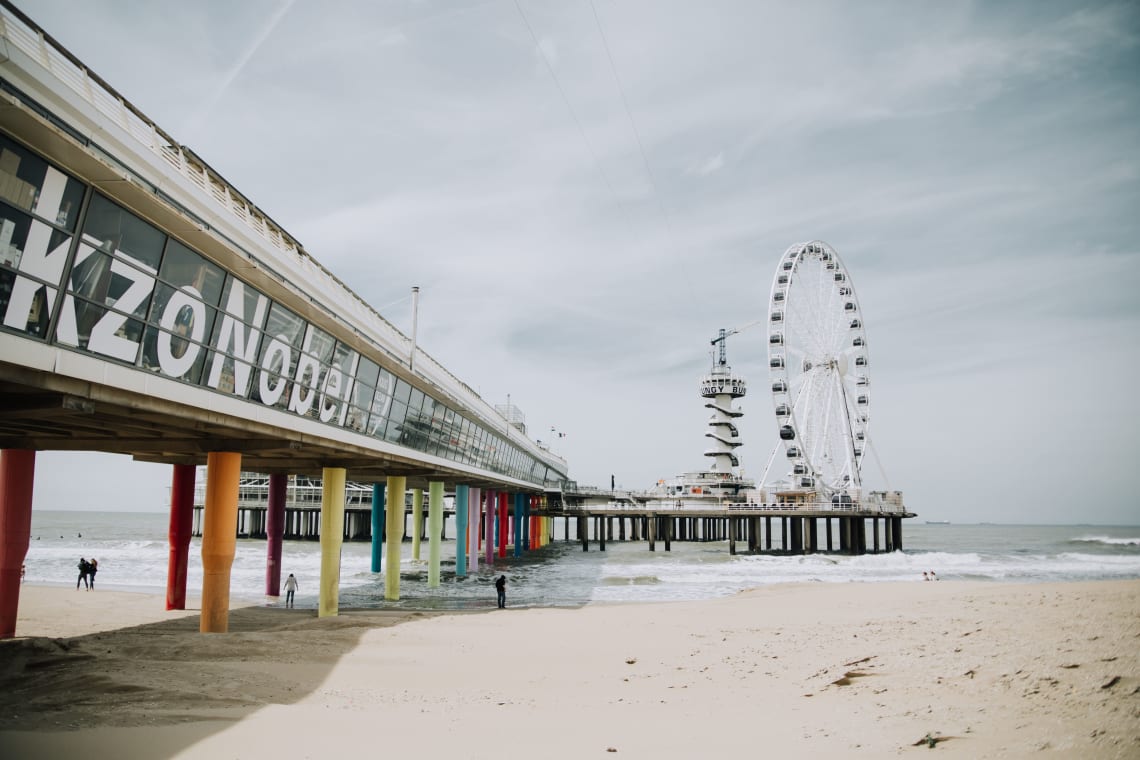
When you're done looking around the city, head to nearby Scheveningen — a quintessential Dutch seaside resort complete with pier and attractions. Here, you can choose to relax on the beach, go for a refreshing dip or even surf!
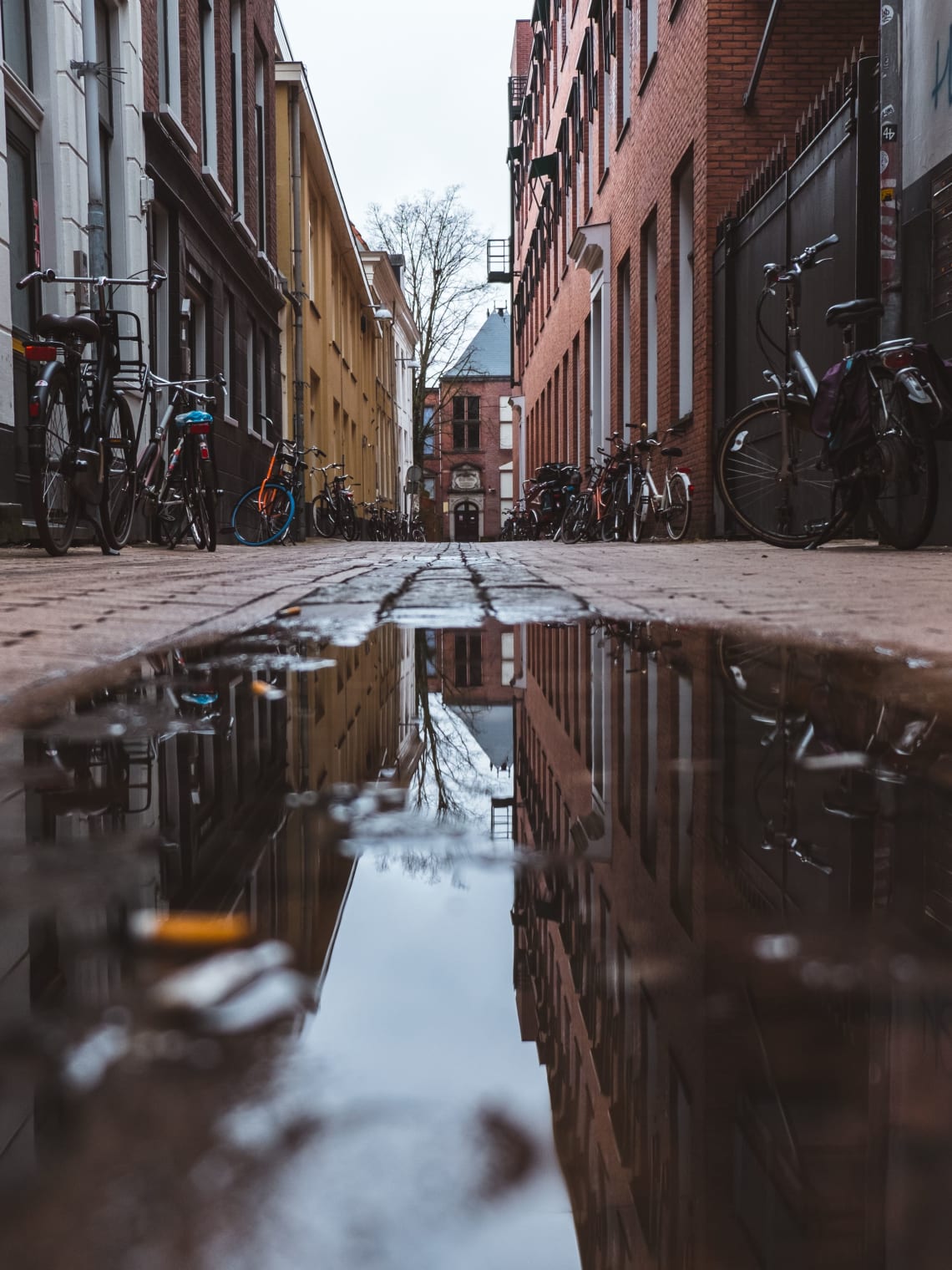
Groningen has a sizable student population that, together with unlimited opening times for bars, gives the city a lively buzz.
It is also a true cycling city; around 60% of all traffic movement in and around the centre is by bicycle. The perfect place, therefore, to rent a bike and do as the locals do (without the stress of overcrowded cycle lanes as in Amsterdam).
To get a great view of Groningen, climb the Martini Tower — part of the Martini Church — in the centre. Afterwards, soak up some culture in the Groninger Museum, which houses an excellent selection of modern and contemporary art. At night, head to Vera underground pop club for a night of alternative music or go to one of Groningen's nightclubs to dance all night to techno and house music.
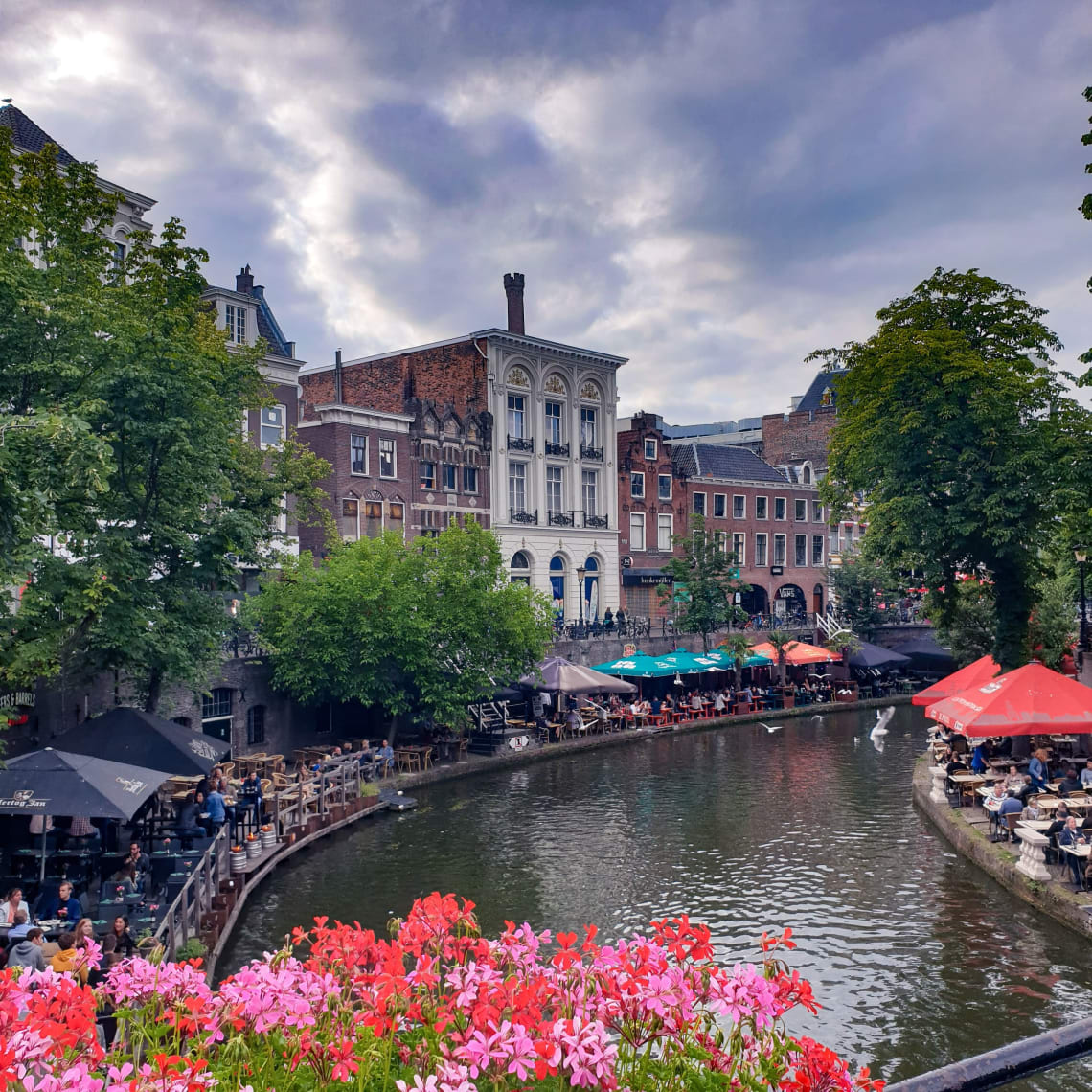
Utrecht is a lovely, laidback alternative to Amsterdam. It has everything the capital has – a system of canals, beautiful gabled merchant's houses, historic monuments and coffee shops — but a significantly lower number of tourists.
There are many museums to visit but, if you only choose one, then visit the Centraal Museum, which houses a significant collection of Rietveld designs and has a permanent Dick Bruna (a Dutch author, artists and illustrator who created the Miffy character) exhibition.
If you're here on a Saturday, you could join a free walking tour starting from the Dom Square. In the evening, grab a seat outside a bar or café along one of the canals and soak up the city's atmosphere as you drink a locally-brewed beer.
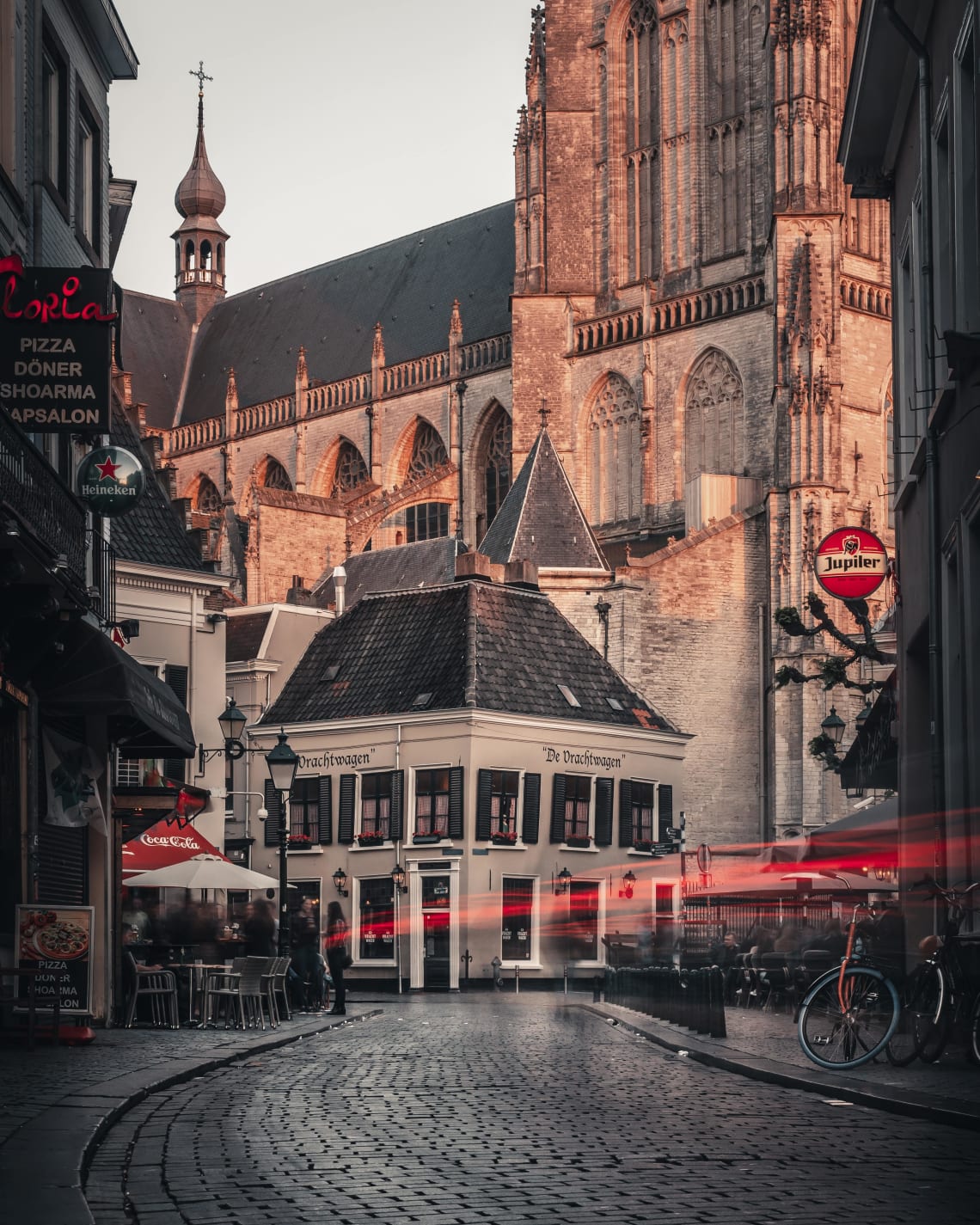
This medium-sized city isn't usually on people's list of places to see in the Netherlands, but it should be. The city center has been voted the country's best for two years running and the big park (Valkenburg) that is situated between the train station and the centre has also been named as the country's most attractive.
Breda's market square is home to a wealth of restaurants, cafés and bars — all with a lot of outdoor seating that appears to be constantly filled with people enjoying themselves. The square is also where you'll find the Grote Kerk (big church), whose tower you can climb to enjoy views across the city and surrounding region.
Another reason why Breda should be on the map is because of an old industrial terrain, just a little way out of the city, that has been transformed into a thriving area for independent retailers, craftsmen and artists (located at Stek) and skaters (at Pier15 — a renowned skate park, cultural hub and location for awesome parties).
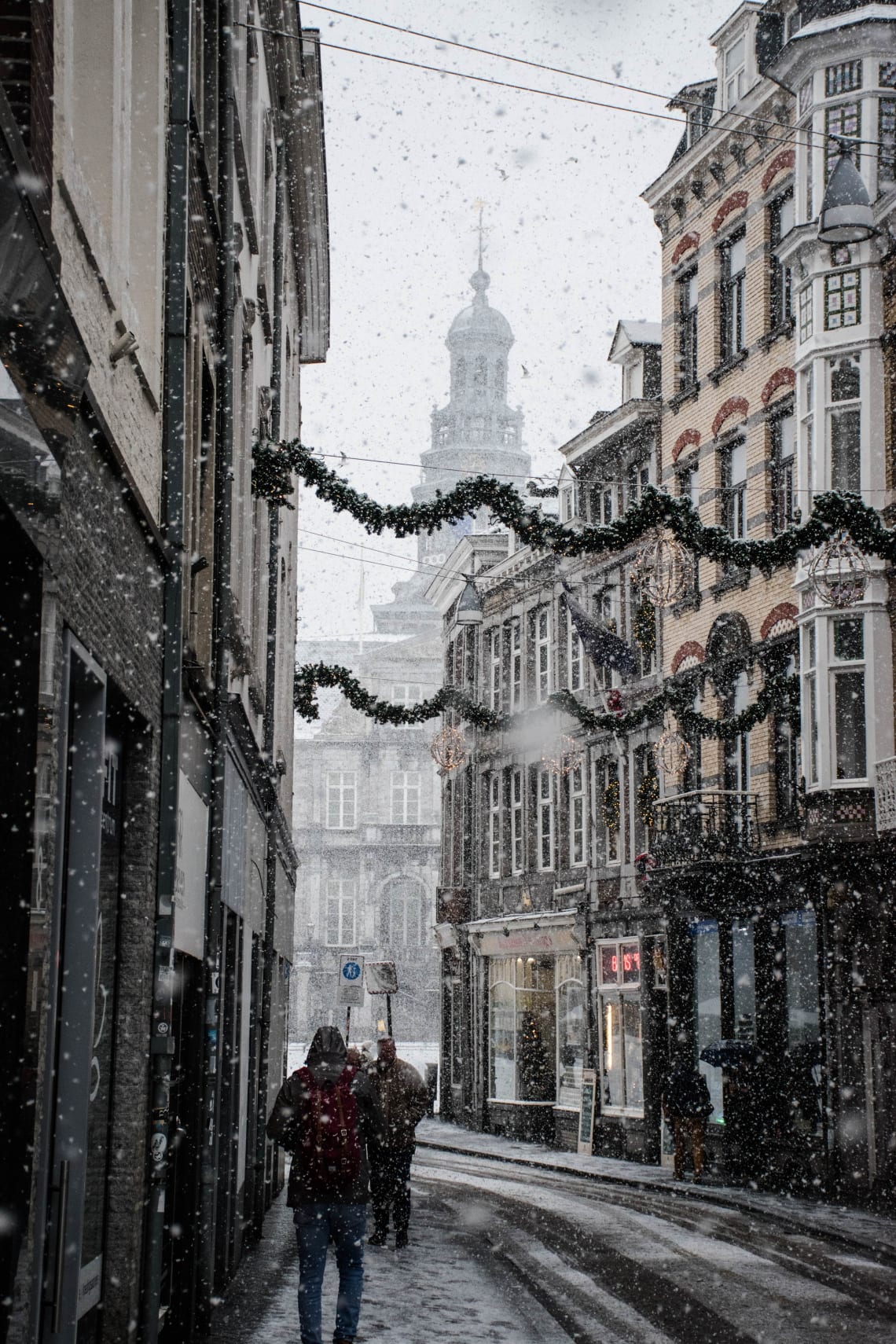
In the far Southeast of the country and situated on the River Maas, Maastricht is the largest city in the province of Limburg. It's an attractive and historic city that hosts one of Europe's top Christmas markets.
Don't be surprised if you hear people speaking a language that sounds different to what you're used to hearing in the Netherlands; most people from Limburg speak their own dialect alongside standard Dutch.
Highlights here include taking a river cruise, taking a tour of the city's underground tunnels, visiting the St Servaasbasiliek (a church whose earliest sections date back to 1000 AD) and eating vlaai — a sweet pie typical of this region.
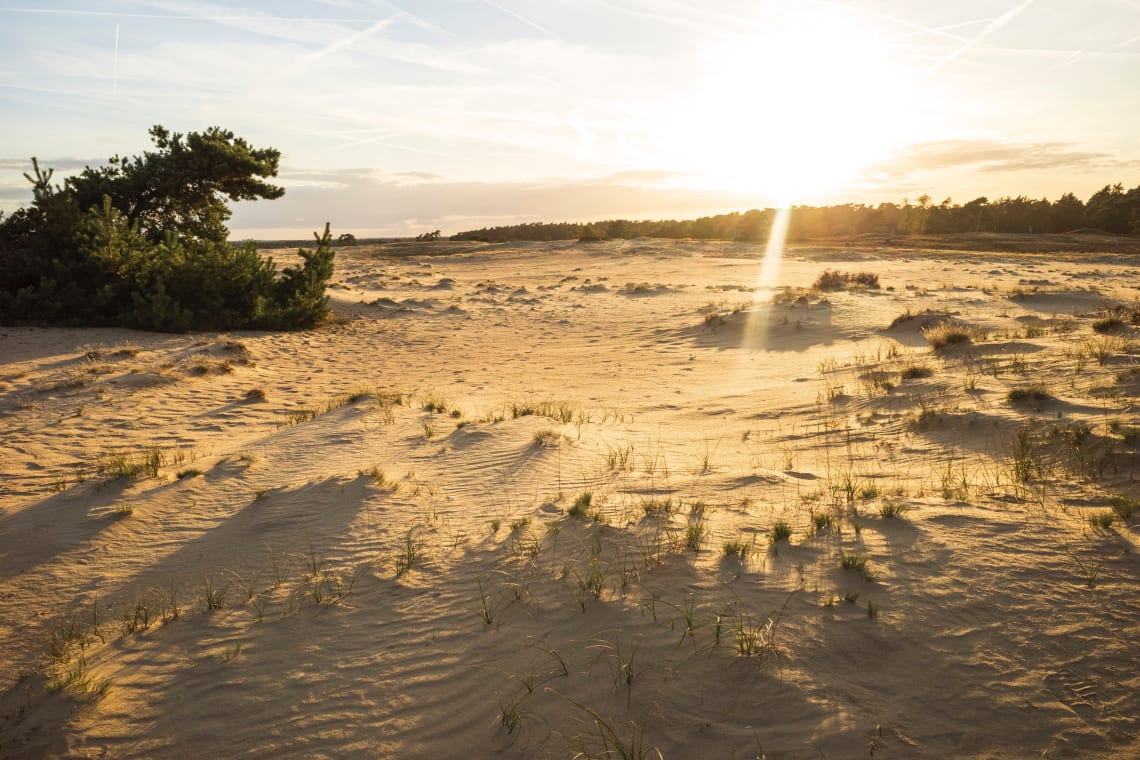
This park is one of the largest nature reserves in the Netherlands and is an area of outstanding natural beauty. The landscape you see here was formed during the last Ice Age and consists of forest, heathland and sand dunes.
The Hoge Veluwe is home to a large deer population and you may even be lucky enough to spot wild boar, badgers and foxes. There are many walking trails throughout the park and it is also possible to explore parts of it by bicycle.
Top tip: you can rent bikes for free from one of the park entrances (Hoenderloo, Otterlo and Schaarsbergen)!
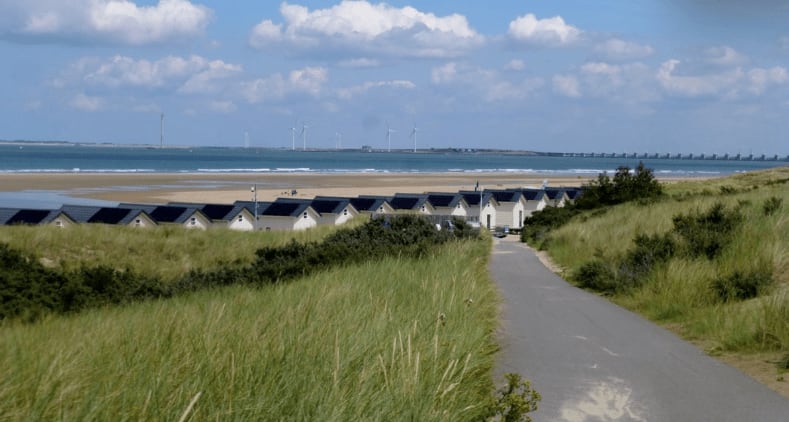
Zeeland is the far southwest of the country and, due to its geography, has a very long coastline. There is certainly no shortage of lovely beaches around here!
In the summer, Zeeland is the perfect place to camp and spend long, warm days on the beach and in the sea — which is exactly what many Dutch people love to do. If you like more active pursuits, there are many locations in Zeeland where you can kite-surf.
No trip to Zeeland would be complete without a trip to Neeltje Jans Deltapark, where you can witness the world's largest storm-surge barrier, built to protect the land from flooding. Another impressive example of how the Dutch deal with water in their country.
Whatever you choose to do, make sure to end your day by eating a big pan of Zeeuwse Mosselen (local mussels) with a side of chunky fries – the most typical dish from these parts.
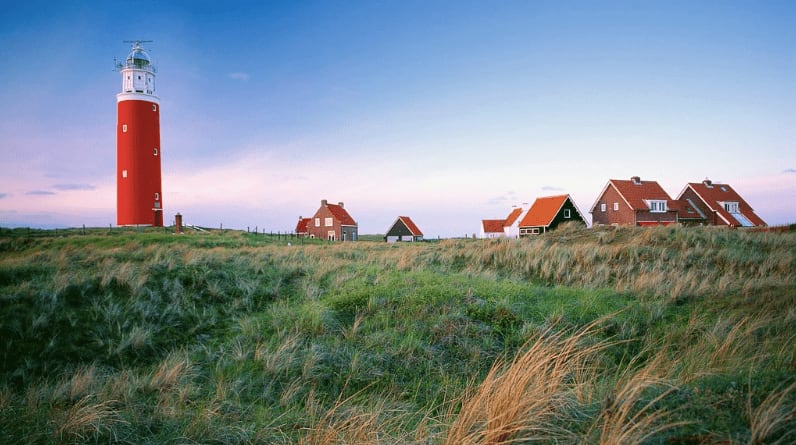
Not many people know that you can visit five islands when traveling in Holland.
Listed as a World Heritage site, the Wadden Sea and its islands (the Dutch ones being Texel, Vlieland, Terschelling, Ameland and Schiermonnikoog) are an important and beautiful part of the landscape. These are places you visit in order to relax, spot wildlife or engage in outdoor pursuits.
Two really unique things that you can do here are visiting a seal centre on the island of Texel (easily reached by boat from Den Helder, 1.5 hours north of Amsterdam) and going on a mudflat hike from the mainland in Friesland or Groningen to Terschelling, Ameland or Schiermonnikoog (only possible at low tide and subject to weather and maritime conditions).
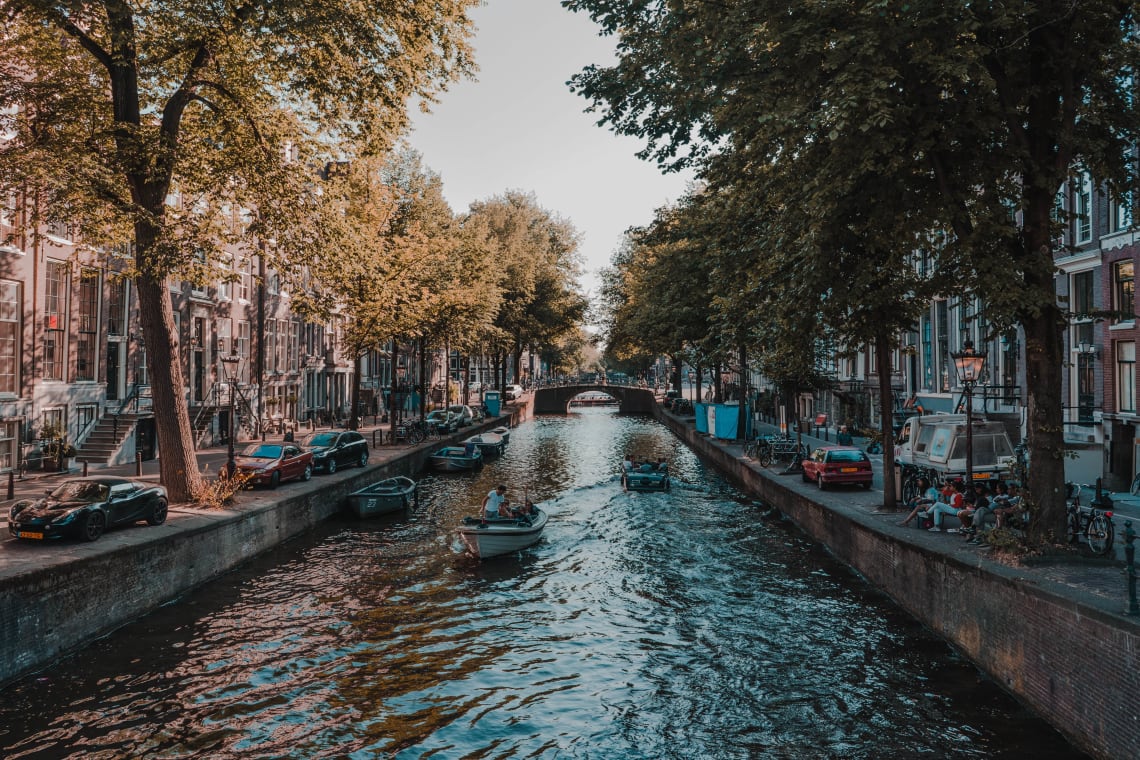
Of course, the capital city had to feature in this top 10 list of places to visit in the Netherlands. Amsterdam is a beautiful, lively, historic, cultural and entertaining place full of canals, old buildings, cosy bars, world-class museums (the Rijksmuseum, Van Gogh museum and Anne Frank House are some of the most popular), interesting markets and nightlife venues.
It is also a place like no other in the sense that you can legally buy and consume marijuana in licensed shops, visit a sex museum and walk through the red light district where sex workers stand in windows to attract customers. Because it is such an impressive place with so much to see and do, the city can be very crowded. To escape the crowds and get a better impression of local life in Amsterdam, head to one of the neighborhoods adjacent to the centre — each one has its own distinct flavor.
I could write a lot about everything Amsterdam has to offer but will limit this section to some of my favorite places and activities by describing an itinerary for 24 hours in Amsterdam, starting at the Central Station.
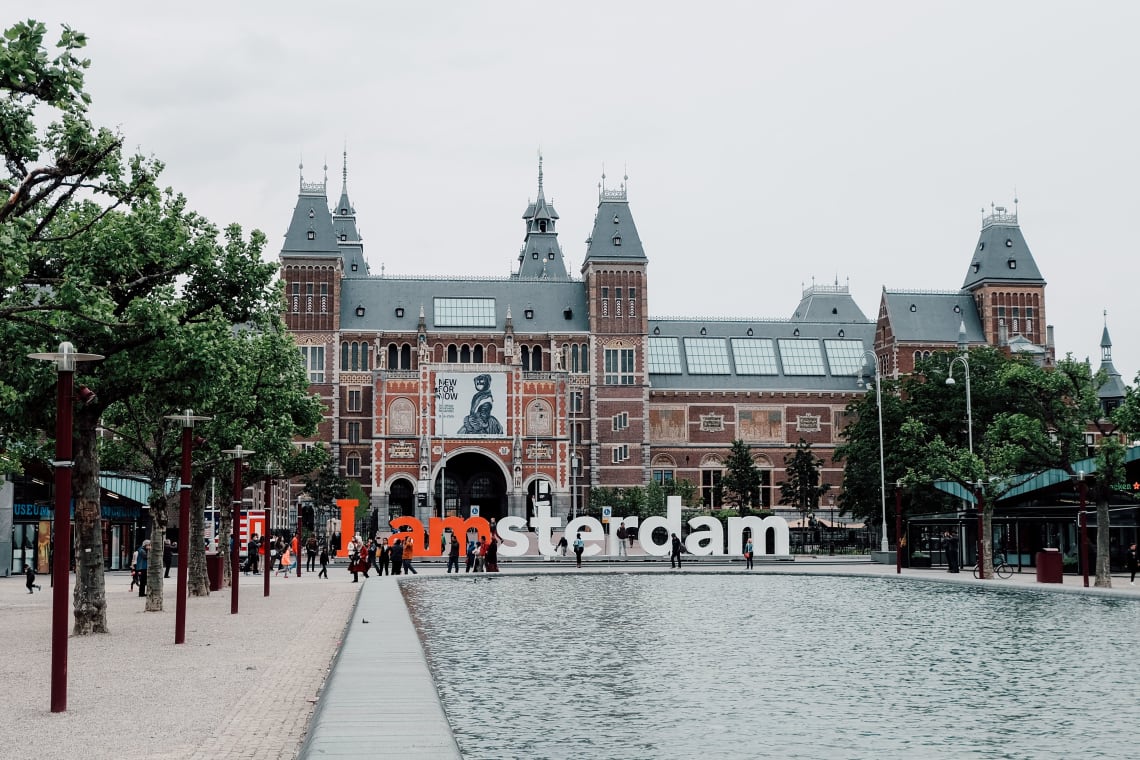
First up, a short walk to the public library where you can take a lift (or the stairs, of course) to the top floor to get an amazing panoramic view of the city.
Next, head to Brouwerij 't IJ and sample a selection of local beers before continuing on to the nearby Plantage neighbourhood which is tranquil and green with a pretty botanical garden. From here, it's just a short walk to Waterlooplein, with its cool vintage market and shops.
After having done some shopping, it's time to have a quick look inside the Pathe Tuschinski Theatre to admire the most beautiful cinema in the Netherlands with its lavish Art Nouveau and Art Deco design features. Next, stop at FOAM photography museum before continuing on to the Vondelpark, where it's time to have a well-earned rest.
From here it's a short trip to the Foodhallen where you can eat a wide range of foods from all over the world and fill your belly ready for a night out at the Westergasfabriek — a former gasworks that is now a cultural hub — in Amsterdam West. Finally, head back to your accommodation* for a good night's sleep.
*For a unique Amsterdam experience, book a room on a houseboat on one of the city's canals!
Finally, my favorite topic! What should you eat during your Netherlands trip? While the Dutch aren't especially well-known for their exciting cuisine, there are some delicious foods I think you have to try while traveling through the Netherlands.
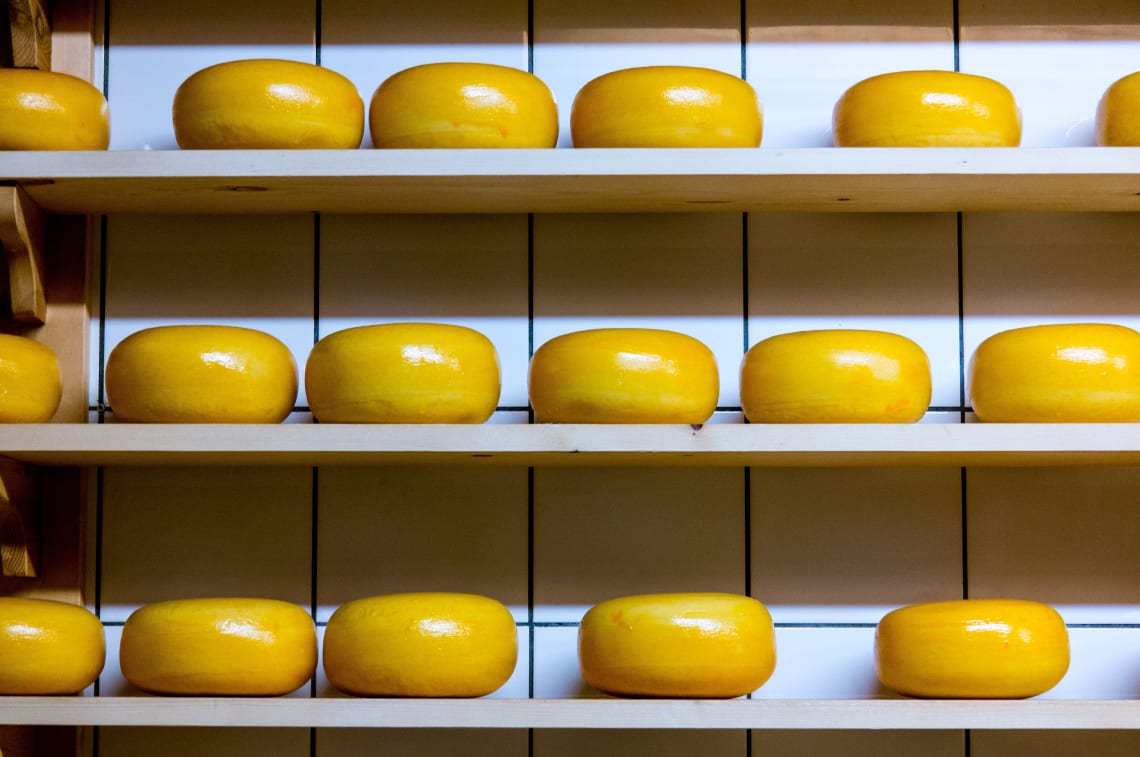
No Dutch foods list would be complete without mentioning cheese.
The Netherlands may not produce as wide a variety of cheeses as France, for example, but it certainly make up for this in quantity — the Netherlands is one of the top three cheese producing countries in the world! An amazing feat considering the country's tiny size.
Most Dutch towns and cities have markets at least once a week and I really recommend you to track down the cheese stall. My personal recommendations are Gouda extra belegen (an extra mature cheese), oude kaas (extra, extra mature cheese) and komijnekaas (cheese with cumin seeds).
The Dutch love their chunky fries, preferably covered in mayonnaise and served with what are known as "snacks" — a variety of deep-fried treats including frikandel (a kind of sausage) and bitterballen (breaded balls filled with ragout).
You won't have to look far to find a place selling these foods and you may even encounter vending machines where you can simply put a couple of Euros in the slot and open a door to find a (usually) freshly-prepared snack.
A must-eat while in the Netherlands!
Dutch haring is herring — a kind of fish — that has been soused (frozen for a couple of days and laid in salt) and which locals typically eat with diced raw onions and/or gherkins. It's a very healthy snack as it contains lots of good fats and it tastes delicious too.
You can find haring at markets, in fishmongers or at stalls along the seaside or canals in Amsterdam.
Poffertjes are basically mini, fluffy pancakes made with buckwheat flour and yeast. Again, this Dutch food can often be found at market stalls and is typically served on paper plates with a huge chunk of butter and covered in icing sugar.
Appeltaart met slagroom is an unmissable Dutch experience. Apple pie with whipped cream may not sound that exciting but, in my experience, the Dutch have the best apple pie in the world.
As you walk around the streets of Dutch cities you're likely to spot signs outside cafés advertising this tasty treat; I strongly recommend you walk in, order it together with a coffee and sit on the terrace as you watch the world go by.
Potatoes and meat feature heavily in Dutch cuisine, and stamppot — mashed potato with a vegetable mixed in — with smoked sausage on top, is probably the most typical way to eat it.
Despite this being a very popular dish (I know a lot of Dutch people who eat this about once a week), you are unlikely to find it in restaurants unless you go to one serving local cuisine. My personal favorite variation is boerenstamp – mashed potato with kale.
Developed in Indonesia during colonial times, the rijsttafel is now an integral part of the Dutch gastronomic scene and ordering one in an Indonesian restaurant is an amazing experience. It is a medley of many different small dishes (chicken satay and peanut sauce, Gado Gado, chicken in ketchup, spiced pork belly, stir-fried vegetables...) served with rice, noodles and kroepoek (prawn crackers).
If you like it spicy, make sure to ask for extra sambal sauce!
I could write a long article just about festivities in the Netherlands, but for now, I have narrowed the selection down to five key events in the calendar:
You've probably heard of Brazilian Carnival, but maybe you weren't aware that this is a big deal in the Netherlands too. The dates vary every year, but for a week during February/March the provinces of Noord Brabant and Limburg (Catholic regions) celebrate Carnival, which tends to consist of dressing up in costumes, listening to lots of Dutch carnival songs and drinking large quantities of beer.
On the 27th of April, the whole country seems to come to a standstill to celebrate the King's birthday; the nationwide party that takes place is HUGE. The streets are transformed into rivers of orange (the color of the royal house), music is pumping and people everywhere are reveling. A must-do for party animals!
One of the most highly-regarded jazz festivals in the world takes place in mid-July in Rotterdam. Artists who have performed here over the years include Miles Davis, Herbie Hancock and Amy Winehouse.
Often considered as one of the most LGBT-friendly cities in the world, Amsterdam celebrates pride at the end of July and beginning of August. The boat parties along the city's canals are an experience you'll never forget!
Christmas seems to be somewhat of an afterthought in the Netherlands; the 5th of December — the day when Sinterklaas (Saint Nicholas) is celebrated — is more important for most. On this day, children all across the country leave their shoes out for Sinterklaas and his helpers to fill with sweets.
Last but not least, some more information about doing a Worldpackers work exchange in the Netherlands.
As previously mentioned, accommodation in the Netherlands is fairly expensive so doing a work exchange can be a great way to stick to a budget and save money while traveling. Apart from that, it's an enriching experience that will make your travels in the Netherlands even more memorable. And don't worry if you don't speak a word of Dutch, you can get by just fine with English.
At the last count, there were 21 hosts looking for volunteers in the Netherlands. Here are a few examples of where you could stay and help out:
By now, you should be convinced that the Netherlands needs to be on your travel bucket list! Any questions or comments? Feel free to get in touch for more information.
Escriba aquí sus preguntas y saludos al autor
Yicka
11 de Nov de 2019
hey helen,
I just read your blog and I really loved it. I am from the Netherlands my self and your blog is very accurate. thank you!
Nedj
07 de Jul de 2024
Very good Helen amazing
Ola
17 de Feb de 2025
Hello, I want to work with you. I live in Holland, Inkuzan.